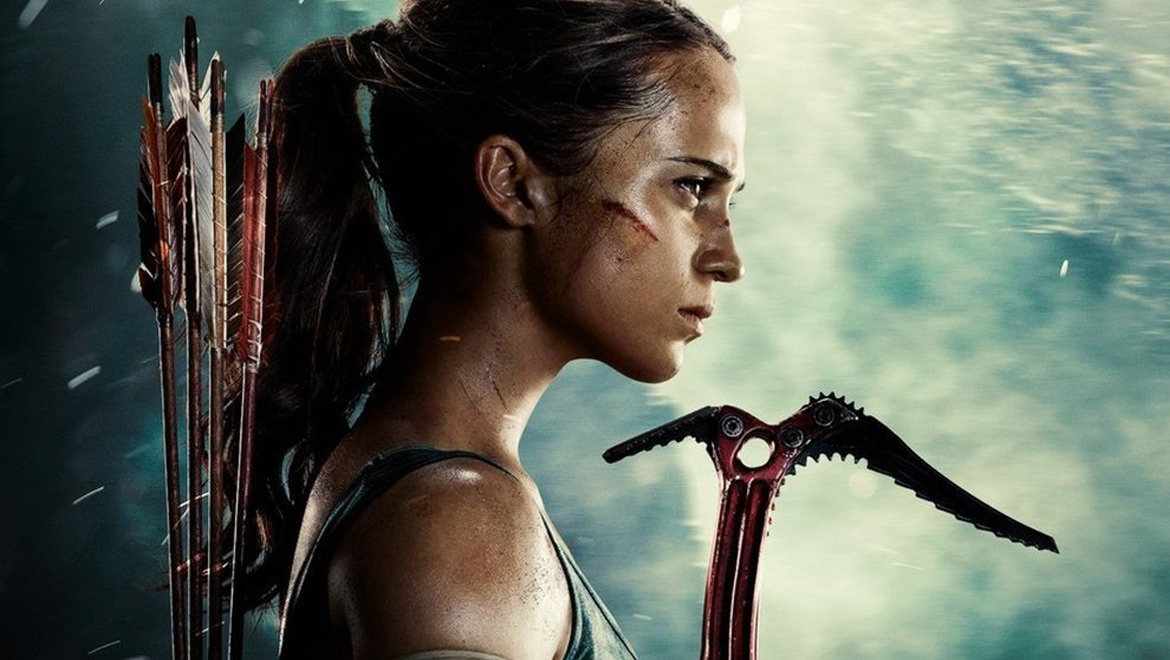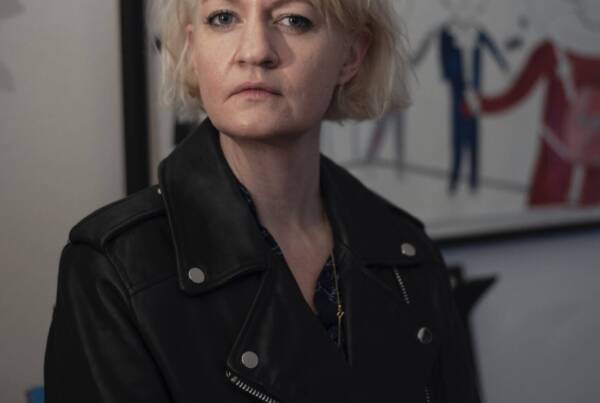Review by Toni Stanger // Whilst it was initially disappointing to see the story take head in a different direction to the game, the modifications make sense considering the transition into film. As much as it would’ve been incredible to see Lara plough through loads of Trinity guards, it’s not very plausible for a two-hour film.
Review by Toni Stanger

I wasn’t overly enthused when Alicia Vikander was first announced as the new Lara Croft. I believed her to be an incredible actress – especially having seen her in Ex Machina – but she didn’t seem like the right fit for Lara. However, her performance in Tomb Raider fortunately proved me wrong. Vikander was exceptional in her most physically demanding role yet. She brought something new to the screen and, whilst I still feel she’s not entirely right, I am finally content with Vikander as the new Lara Croft.
In the 2013 game, of which the film is based, we’re first introduced to Lara Croft already aboard the Endurance ship – with a full crew – to find the lost kingdom of Yamatai, an island off the coast of Japan. In both the game and the film, we’re introduced to Lara Croft before she becomes the Lara Croft as this is her origin story. However, the film takes us back a step further than the game, providing us with insight into who she was before she set out on her expedition. Ultimately, these scenes are what make Vikander work as the new Lara. We see the kind of life she was living before she followed in the literal footsteps of her father Richard Croft (Dominic West), who had disappeared seven years prior. Presumed dead, Lara is heir to the Croft fortune, manor and business – but she refuses to sign the papers as that would mean her father really is dead. Instead, Lara makes a living as a courier for a takeaway and attends boxing classes in her spare time. in addition to various flashbacks of her as a child, this is the first time on screen that we actually get a glimpse into who Lara was before she became the legend we all know her to be.
Though some scenes are reminiscent, the plot of Tomb Raider the movie plays out differently to the game. Himiko – the ancient Japanese Sun Queen with seemingly shamanistic powers – is still the main focus of the expedition organisation known as Trinity, as well as Richard’s research. We learn a lot of backstory through old recordings left by Richard, which is a simple way to lay down exposition – especially as the film doesn’t have time to explore this endless myth in the same way we would uncover it in the game. The only issue is that we hear this same recording about three different times – to remind the audience of some key facts – which is pretty excessive. Legend says Himiko’s soul was trapped inside her body when she died, and a ritual can transfer her soul into another’s body (killing the host in the process) which is what happens in the game. However, the tale told to us – again, three times – in the film differs. Himiko was chained up by her Generals so she could do no more harm, as she was capable of killing people simply by touch. This film’s telling of events completely abolishes the magical element – providing a much more sound explanation – which completely changes the narrative. This decision was an understandable one to make, as I’m sure they wouldn’t have done it justice, nor would it fully work in the film world of Tomb Raider – a seemingly serious action film. However, this change meant there wasn’t much else to explore and so the narrative they went with feels fairly underwhelming, especially compared to what happens in the game.
Another key difference is the lack of Lara’s crew from the Endurance. None of the other characters from the game – apart from the antagonist known as Mathias (Walton Goggins) – made it into the film. Lara’s only crew member is Lu Ren (Daniel Wu) – the ship’s captain – and he is a great character who makes up for the absence of others. With a smaller main cast and an immediate introduction to Mathias when on Yamatai, Lara becomes an integral part to triggering the events leading up the main climax. Since Mathias and Trinity have spent seven years looking for the opening to Himiko’s tomb, they only progress further when Mathias steals Richard’s notebook from Lara. Not believing her father’s warnings, Lara eventually agrees to open the tomb for Mathias in order to get this whole thing over with. Upon first watch, it was quite unsettling to see Lara be the one to actually open the tomb – in the game, Lara finds everything already slowly underway and sets out to stop it. Then again, Lara is a tomb raider, so it does make sense for her to open one. It also serves as showing the sheer brilliance of both Lara and her father, tying them together as the only two people who knew how to open the tomb.
Whilst it was initially disappointing to see the story take head in a different direction to the game, the modifications make sense considering the transition into film. As much as it would’ve been incredible to see Lara plough through loads of Trinity guards, it’s not very plausible for a two-hour film. Lara’s fighting skills – whether she’s using weapons or not – are something that will likely be explored further in the sequels to come. Apart from some heavier action scenes, there are two iconic scenes in particular that I would’ve liked to see in the film. The first is when Lara first comes to on shore after the Endurance sank – she is hit over the head by an inhabitant and wakes up again hung upside down like a bat in a tomb-like place. In the film, she is hit over the head by Mathias, which was necessary in order for them to meet whilst trimming down the story. The second is a fantastic scene where Lara escapes her enemies by diving into a blood coloured pool – filled with remains – in which we see her head slowly arise from. However – much like the heavy-action scenes – these belong in the game world, and not in the film world.
Tomb Raider has some great fast-paced, anxiety-inducing action scenes, and they are enough for this origin film. We see Lara kill her first person in self-defence, and take a moment to silently come to terms with it. We see her find and use a bow – one of her trademark weapons – and put into practice the years she spent doing archery as a child. We even see Lara push herself physically by climbing, jumping and running – something heavily emulated from the game. It really sets up Lara learning how to use weapons, fight in combat, and instil some of the skills she picked up from her boxing classes. Tomb Raider does a great job reducing the long and complex storyline from the game and turning it into a film experience. Plus, the film doesn’t need us to see Lara as too hardened of a killer just yet – that is something that will happen over time as her character builds. Overall, Vikander’s Lara packs a punch, but she lacks the emotional depth to her game counterpart. Hopefully this is something that will be rectified in the sequels as the ending sets up and entirely new story for Lara Croft’s next adventure.








